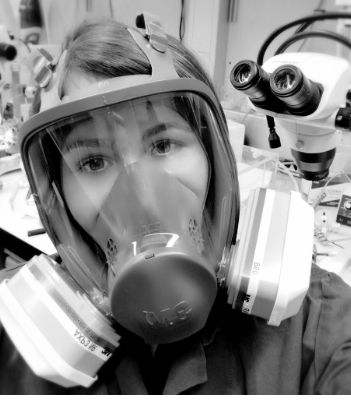Isoflurane:
Introduction to Isoflurane
Isoflurane is a volatile liquid inhalation anesthetic commonly used in medical and veterinary practice to induce and maintain anesthesia during surgical procedures. Its discovery and subsequent medical applications have revolutionized the field of anesthesia.
Discovery of Isoflurane
Isoflurane was first synthesized in the late 20th century by pharmaceutical researchers seeking to develop a safer alternative to existing inhalation anesthetics. Its discovery stemmed from efforts to minimize the adverse effects associated with earlier agents while maintaining efficacy in inducing anesthesia.
Mechanism of Action
Isoflurane exerts its anesthetic effects by enhancing the activity of gamma-aminobutyric acid (GABA) receptors in the central nervous system, resulting in neuronal inhibition and the suppression of consciousness and pain perception.
Medical Uses of Isoflurane
Anesthesia Induction
Isoflurane is commonly used to induce anesthesia due to its rapid onset of action and favorable pharmacokinetic profile. It is administered via inhalation through a specialized anesthesia delivery system.
Maintenance of Anesthesia
Once anesthesia is induced, isoflurane is often used to maintain a steady state of unconsciousness and analgesia throughout the surgical procedure. Its precise control and titratability make it suitable for a wide range of surgical interventions.
Veterinary Applications
Isoflurane is extensively utilized in veterinary medicine for anesthesia in various animal species, including dogs, cats, and exotic animals. Its safety profile and ease of administration make it a preferred choice among veterinarians.
Comparison with Other Inhalation Anesthetics
Compared to other inhalation anesthetics such as sevoflurane and desflurane, isoflurane offers unique advantages in terms of potency, cardiovascular stability, and cost-effectiveness, making it a preferred choice in many clinical settings.
Safety and Side Effects
While isoflurane is generally considered safe when administered by trained healthcare professionals, it can cause side effects such as respiratory depression, hypotension, and postoperative nausea and vomiting. Proper monitoring and patient assessment are essential to mitigate these risks.
Sevoflurane Brand and Composition
Sevoflurane is marketed under various brand names, including Ultane, Sevorane, and Sojourn. It is a clear, colorless liquid with a slightly sweet odor, chemically described as 2,2,2-trifluoro-1-fluoroethyl-difluoromethyl ether.
Off-Label Uses of Sevoflurane
While sevoflurane is primarily used for anesthesia induction and maintenance, it has also been investigated for off-label uses in medical research. Some potential off-label uses include:
- Bronchodilation:
Sevoflurane has bronchodilatory properties and has been studied as a potential treatment for bronchospasm in patients with asthma or chronic obstructive pulmonary disease (COPD).
- Neuroprotection:
Preclinical studies suggest that sevoflurane may have neuroprotective effects against ischemic brain injury and neurodegenerative diseases. Further research is needed to elucidate its clinical implications.
Conclusion
In conclusion, sevoflurane represents a versatile and valuable tool in modern anesthesia practice. Its brand diversity, broad medical uses, and potential off-label applications highlight its significance in ensuring safe and effective patient care during surgical procedures.
FAQs about Sevoflurane
1. Can sevoflurane be administered to pediatric patients?
Yes, sevoflurane is commonly used in pediatric anesthesia due to its favorable pharmacokinetic profile and minimal airway irritation.
2. Is sevoflurane safe for use in elderly patients?
Sevoflurane is generally well-tolerated in elderly patients, but careful dose titration and monitoring are recommended due to age-related changes in drug metabolism and cardiovascular function.
3. What are the potential drug interactions with sevoflurane?
Sevoflurane may interact with other medications, such as opioids, benzodiazepines, and neuromuscular blocking agents, leading to additive effects on central nervous system depression and respiratory depression.
4. Can sevoflurane cause malignant hyperthermia?
While rare, malignant hyperthermia is a potential complication of sevoflurane anesthesia, particularly in patients with a genetic predisposition. Prompt recognition and treatment are essential to prevent life-threatening complications.
5. Are there any contraindications to using sevoflurane?
Sevoflurane is contraindicated in patients with a history of malignant hyperthermia, severe hepatic dysfunction, or known hypersensitivity to halogenated anesthetics.


